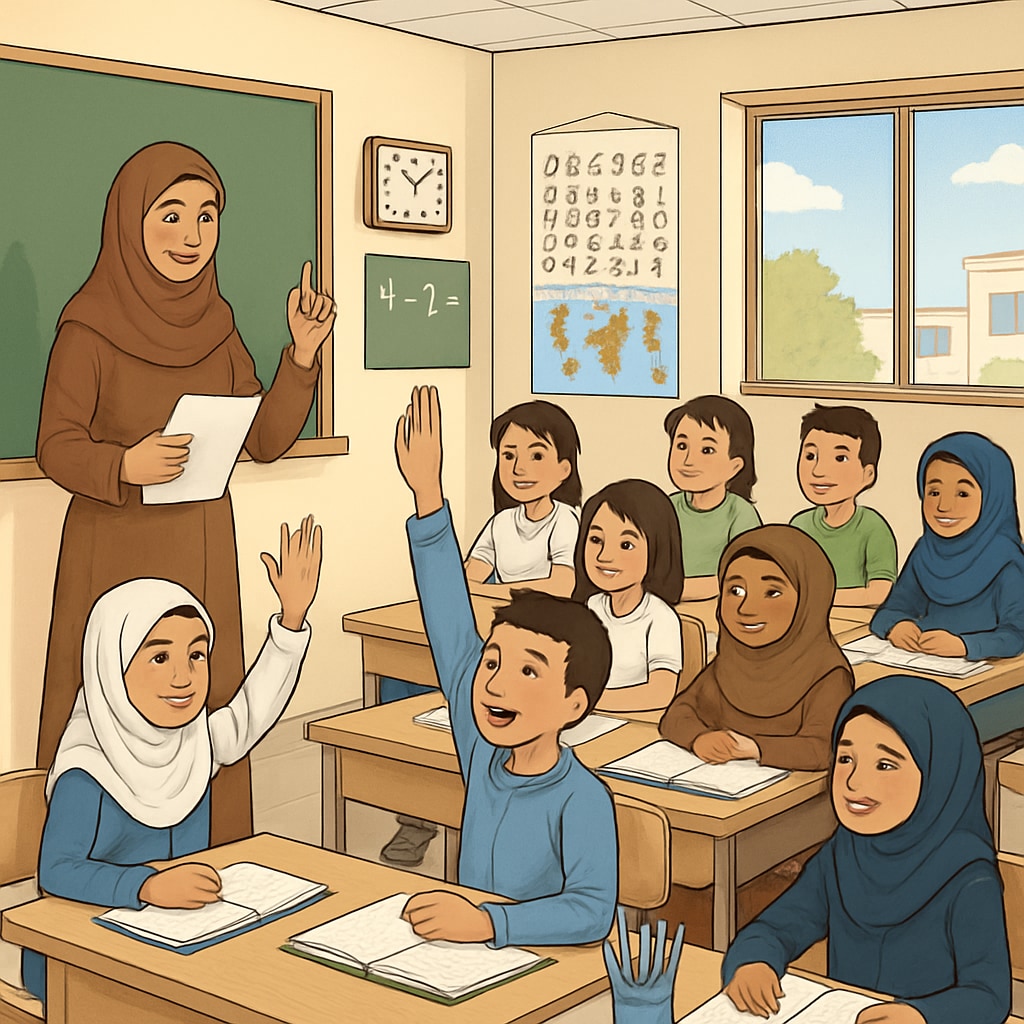The process of rebuilding schools in Gaza presents a multifaceted challenge, particularly when designing science and social studies curricula. These “curricula frameworks” must address the region’s unique cultural identity while incorporating international educational standards to prepare students for a globalized world. Given the post-conflict realities, the integration of peace education and critical thinking skills is equally essential to foster resilience and social harmony among students.
The Challenges of Curriculum Development in Post-Conflict Zones
Designing curricula for schools in Gaza is not simply about creating lesson plans. It involves addressing a range of challenges that are deeply rooted in the region’s history, society, and current circumstances. These challenges include:
- Cultural Sensitivity: The curricula must reflect the values and historical experiences of the local community while avoiding elements that could exacerbate divisions or conflict.
- Infrastructure Limitations: Many schools in Gaza operate with insufficient resources, making it difficult to implement interactive or technology-based teaching methods.
- Psychological Impact: Students and teachers often carry the emotional scars of conflict, which can influence their ability to engage fully with educational content.
- Alignment with Global Standards: Ensuring that students are equipped with knowledge and skills that meet international benchmarks is critical for their future opportunities.
Addressing these challenges requires a holistic approach that combines educational theory, community input, and practical solutions. For example, engaging local educators and parents in the curriculum development process can help ensure that the content is both relevant and respectful of the community’s needs and aspirations.

Strategies for Effective Science and Social Studies Curricula
The science and social studies curricula in Gaza schools must serve as more than just educational tools; they should act as catalysts for peace-building and personal empowerment. Below are some strategies to achieve this:
1. Integrating Peace Education
Peace education is vital in a region like Gaza, where conflict has deeply affected the social fabric. By embedding lessons on conflict resolution, empathy, and cooperation into social studies, students can develop the skills needed to contribute to a more harmonious society.
2. Promoting Critical Thinking
Both science and social studies provide opportunities to foster critical thinking. In science, this can involve inquiry-based learning where students explore real-world problems through experiments. In social studies, students can critically analyze historical events, encouraging them to form their own informed perspectives.
3. Emphasizing Local and Global Relevance
While the curriculum should reflect the local culture and history, it must also expose students to global issues and advancements. For instance, science classes could include studies on sustainable energy solutions, which are particularly relevant to Gaza’s energy challenges.
4. Leveraging Technology
Given the limited resources in many schools, technology can bridge gaps by providing access to digital learning materials. Open educational resources (OER) and virtual labs can make advanced scientific concepts accessible to students, even in resource-scarce environments.

Balancing Local Culture with International Standards
One of the most significant challenges in curriculum development is striking a balance between preserving local identity and meeting international educational standards. This balance can be achieved by:
- Incorporating local history and cultural practices into lesson plans.
- Using internationally recognized frameworks such as UNESCO’s Global Citizenship Education (GCED) to structure the curriculum.
- Training teachers to adapt international methodologies to the local context, ensuring they are both effective and culturally appropriate.
Furthermore, partnerships with international organizations can provide valuable insights and resources. For example, UNESCO and UNICEF have extensive experience in supporting education in post-conflict areas, and their guidelines can serve as a foundation for curriculum design.
The Role of Teachers and Community in Education Reconstruction
Teachers and the broader community play a crucial role in the success of any curriculum. Teachers need to be equipped with the skills and knowledge to deliver the content effectively, especially when addressing sensitive topics like peace education. Community involvement ensures that the curriculum resonates with the students’ lived experiences and aspirations.
Practical steps include:
- Providing professional development programs for teachers, focusing on trauma-informed teaching and innovative pedagogies.
- Establishing forums for parents and community leaders to contribute to curriculum development.
- Encouraging student participation in shaping their learning environment, fostering a sense of ownership and engagement.
As a result, the education system becomes a collaborative effort that reflects the collective vision of the community while preparing students for broader societal participation.
Conclusion
Rebuilding the education system in Gaza is a complex but vital endeavor. Designing science and social studies curricula that balance local culture, international standards, and peace education offers a pathway to a brighter future for the region. By addressing the unique challenges and leveraging innovative strategies, stakeholders can create an educational framework that not only rebuilds schools but also rebuilds hope and resilience in the community.


